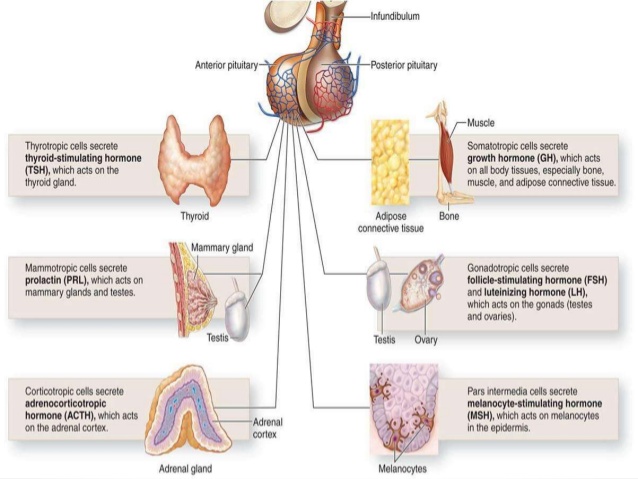
communication III; Endocrine system
The endocrine system is a control system of ductless glands that secrete hormones within specific organs. ... The endocrine system provides an electrochemical connection from the hypothalamus of the brain to all the organs that control the body metabolism, growth and development, and reproduction
Exocrine Glands are those which release their cellular secretions through a duct which empties to the outside or into the lumen (empty internal space) of an organ. These include certain sweat glands, salivary and pancreatic glands, and mammary glands. They are not considered a part of the endocrine system.
Endocrine Glands are those glands which have no duct and release their secretions directly into the intercellular fluid or into the blood. The collection of endocrine glands makes up the endocrine system.
1, The main endocrine glands are the pituitary (anterior and posterior lobes), thyroid, parathyroid, adrenal (cortex and medulla), pancreas, and gonads.
2, The pituitary gland is attached to the hypothalamus of the lower forebrain.
3, The thyroid gland consists of two lateral masses, connected by a cross bridge, that is attached to the trachea. They are slightly inferior to the larynx.
4, The parathyroid glands are four masses of tissue, two embedded posteriors in each lateral mass of the thyroid gland.
5, One adrenal gland is located on top of each kidney. The cortex is the outer layer of the adrenal gland. The medulla is the inner core.
6, The pancreas is along the lower curvature of the stomach, close to where it meets the first region of the small intestine, the duodenum.
7, The gonads (ovaries and testes) are found in the pelvic cavity.


